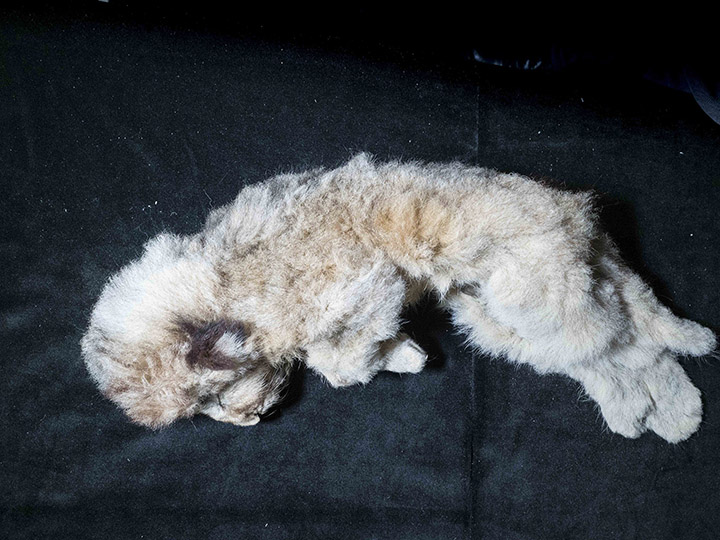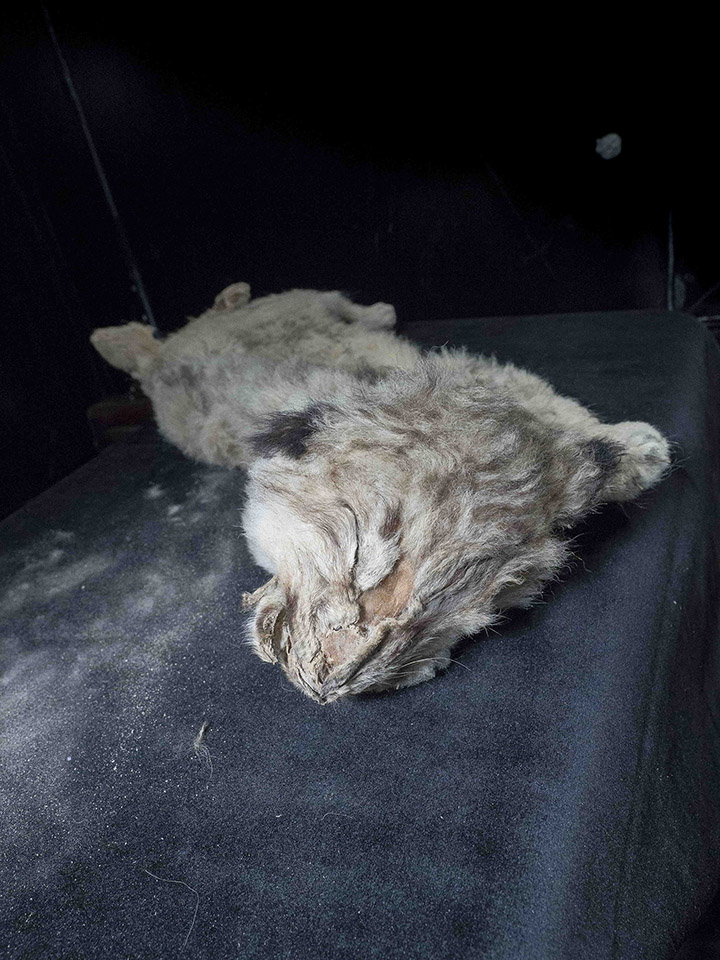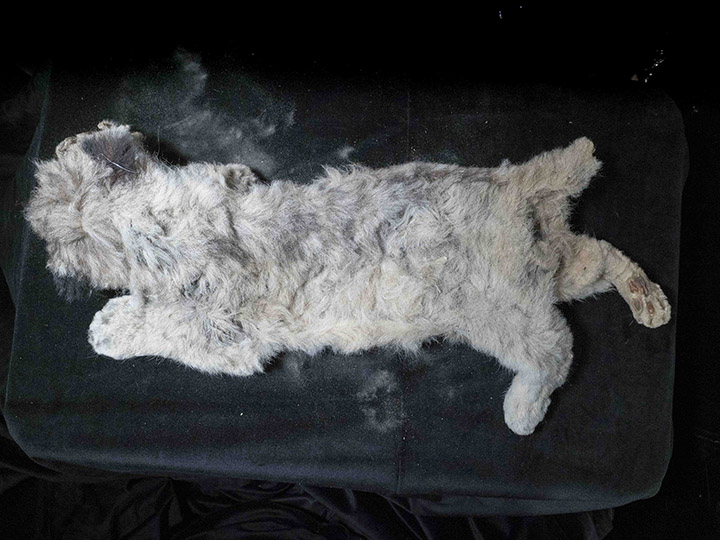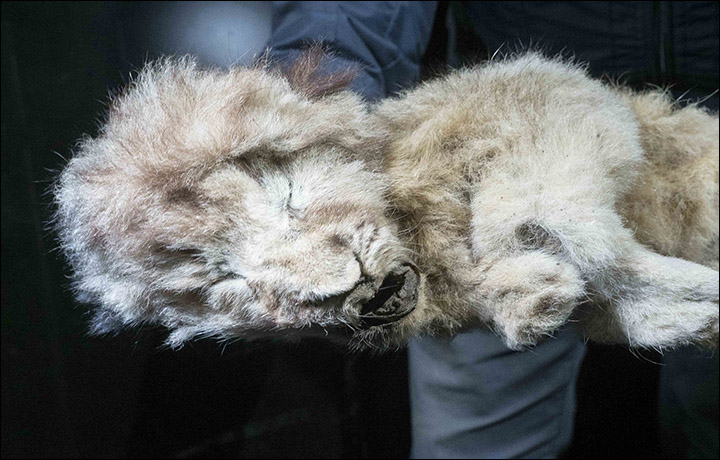‘Male siblings born 44,000 years ago’ found ten metres apart in Yakutia but the truth is rather different – amid hopes to bring species back to life. The pair of cubs were believed to be siblings both born 44,000 years ago.

In fact, one of the famous extinct cave lions named Spartak has been found to be female, not male, and will need to be rechristened as Sparta. And she was born 18,000 years after the cub found next to her named Boris, it now emerges.
Complete restoration works on the baby cave lions, preserved superbly in the Siberian permafrost, reveals a sensational level of pelt and hair preservation. Some 26,000 years ago Sparta’s mother either left her in the cave and went hunting, or was killed herself, leaving the tiny cub without food.
‘She starved to death. We wondered why she looked so skinny when she was found, and then tomography of her internal organs showed there was no fat,’ said scientist Dr Albert Protopopov, an expert in frozen remains from the woolly mammoth era.
‘It was the most extreme stage of starvation.’

Sparta was found in the Yakutia region in 2018 by the same mammoth bone hunter who discovered a bigger cave lion cub called Boris a year earlier.
They were just ten metres apart.
The first theory was that the cubs must have been from the same family – but now scientists know that the cubs are separated by 26,000 years. Boris lived some 44,000 years ago and was aged between two to three weeks when he died. Most likely his death came when his mother left him inside a cave, went hunting and the cave rock collapsed, burying the cub.
‘We found visible traces of internal injuries which we believe could have been caused by a rock falling on him’, Protopopov said. The most important task of this complex research on the cave lion cubs is to restore their appearance.
‘It is still an enigma, in that on hundreds of published drawings of cave lions they are depicted without manes. Yet we notice spots and stripes of pigmentation in that area… which are not seen in modern-day lions. So we are moving towards re-creating the way the cave lions looked.
‘Their living conditions were very different to modern lions in that cave lions lives in a much colder climate and we believe therefore had to look different.
‘There was less prey in cold climate.
‘If we understand this question about mane we might get an idea of their social hierarchy – for example, we don’t know if they created prides with alpha males and several females alike to modern lions.’


Tests are underway on the lions to extract as much information as possible. The cave lions were the largest predators after bears in ancient, and in the area where we find skulls of cave lions, there is only a handful of bear skulls. Lions reigned in ancient Siberia because at the time it was savanna, bears needed more woods.
‘Cave lion cubs are superbly preserved, you can even see their whiskers, and we are hoping to fetch a lot more information from them.’
The scientist predicted: ‘There is a very realistic chance to recreate cave lions and it would be a lot easier than to clone a woolly mammoth.
‘Cave and modern lions separated only 300,000 years ago, in other words, they are different species of the same genus.
‘It means that we can take the DNA of the modern African lion and use it to recreate cave lions.
’It would be a lot easier than the mammoths.
‘But if we find methods to bring back woolly mammoths it would be a revolution and a payback by humans who helped extinguishing of so many species.’
Boris, the older cub, has a severed tail.
This led to speculation he was an ancient lynx, not a cave lion.
‘We were all worried by the lack of a tail on Boris,’ said Dr Protopopov.
‘But the man who found him explained that it got cut off when the cub was taken out of the permafrost.
‘I know it raised suspicion that the lion cub was in fact a lynx, but we know from the very first tests that this was clearly a cave lion cub.’





